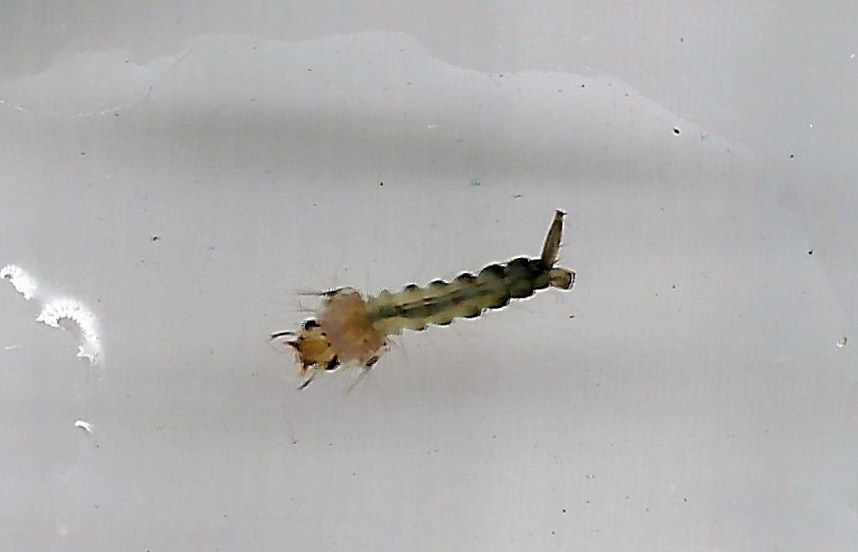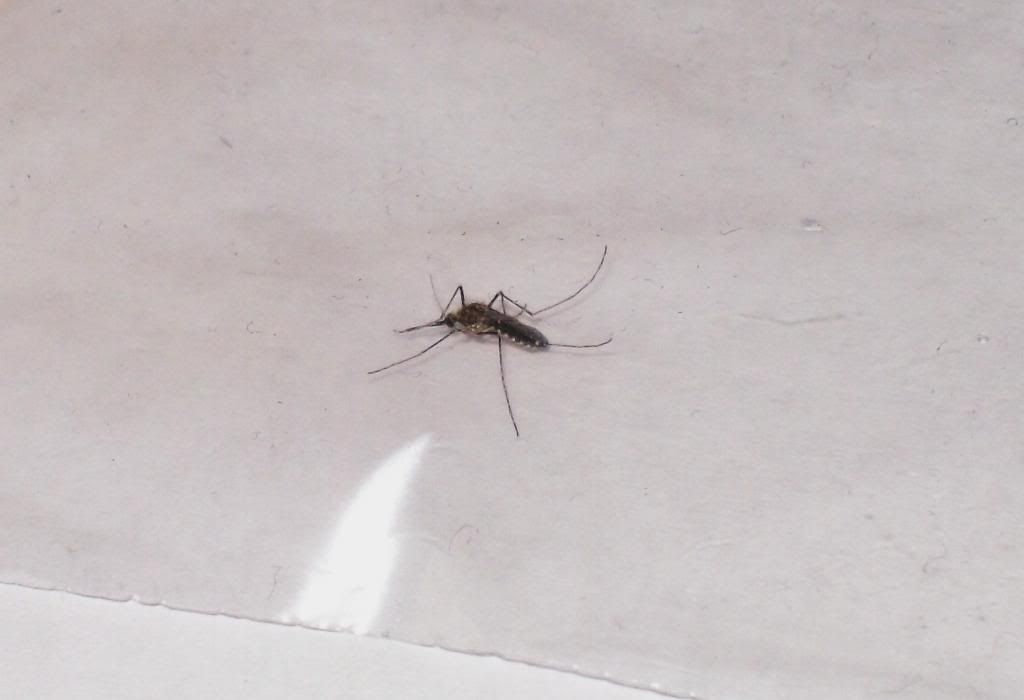Thread subject: Diptera.info :: Culex?
Posted by Johanan Viljoen on 15-04-2013 14:12
#1
Good Afternoon,
I am a South African insect enthusiast, hoping to grow in knowledge concerning Dipterans, particularly Culicids.
Can anyone identify this larva, please? It is about 7mm long, and was captured in Richards Bay, South Africa.

Also, if someone could explain the identifying characteristics to me, I would greatly appreciate it.
Sincerely,
Johanan E. Viljoen,
South Africa
Posted by atylotus on 16-04-2013 08:36
#2
Dear Joh
Sorry to tell you that I'm not familiar with South African fauna, but in Europe it is customary to look at details of the siphon i.e. absent or present and when present is it short or long, what is the position of the hairs on it and what does the pecten at the base of the siphon look like. In Europe a siphon with many bundles on the siphon is Culex and with only 1 bundle Culiseta/Ochlerotatus/Aedes. Sometimes is also helps what habitat it was caught. It seems that Ochlerotatus/Aedes is typical for temporary habitats, the other in more permanent water bodies. If you need any literatur on European fauna I can help you, but I do not have anything on your faunal region.
Posted by Johanan Viljoen on 16-04-2013 11:15
#3
Dear Atylotus,
Thank you so much for your reply. Do not be concerned that you are not familiar with the Genera/species in my area, you have already provided me with much more information than I had at my disposal.:)
I'm happy as long as I'm learning something new. I can tell you that in my area are at least four genera. I know for certain that
Aedes, Anopheles, Culex, and
Toxorhynchetes are found in my region, but I am convinced that there must be other genera also.
Would it be a good idea for me to post the above photo in the forum gallery, once the larva has been identified? I am raising several larvae that come from the same place, and look exactly the same, so I could possibly get an identification for the imago.
Thank you again for the information, it has been greatly enlightening,
Joh
Posted by Johanan Viljoen on 17-04-2013 10:49
#4
Good Morning,
Just an update. This is the adult form of the larva above.

Thank you again for the assistance,
Johanan E. Viljoen

